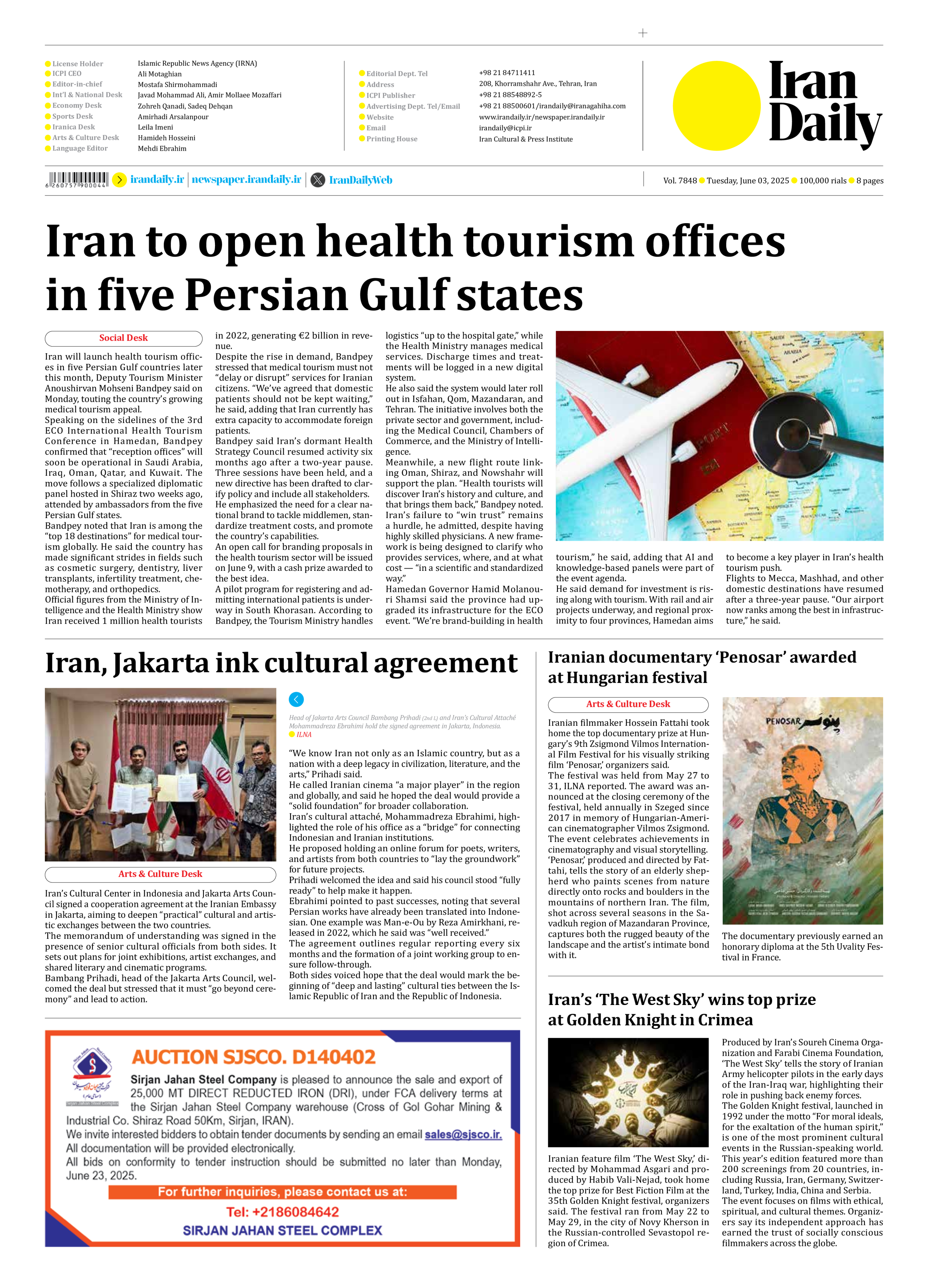
Iran to open health tourism offices in five Persian Gulf states
Iran will launch health tourism offices in five Persian Gulf countries later this month, Deputy Tourism Minister Anoushirvan Mohseni Bandpey said on Monday, touting the country’s growing medical tourism appeal.
Speaking on the sidelines of the 3rd ECO International Health Tourism Conference in Hamedan, Bandpey confirmed that “reception offices” will soon be operational in Saudi Arabia, Iraq, Oman, Qatar, and Kuwait. The move follows a specialized diplomatic panel hosted in Shiraz two weeks ago, attended by ambassadors from the five Persian Gulf states.
Bandpey noted that Iran is among the “top 18 destinations” for medical tourism globally. He said the country has made significant strides in fields such as cosmetic surgery, dentistry, liver transplants, infertility treatment, chemotherapy, and orthopedics.
Official figures from the Ministry of Intelligence and the Health Ministry show Iran received 1 million health tourists in 2022, generating €2 billion in revenue.
Despite the rise in demand, Bandpey stressed that medical tourism must not “delay or disrupt” services for Iranian citizens. “We’ve agreed that domestic patients should not be kept waiting,” he said, adding that Iran currently has extra capacity to accommodate foreign patients.
Bandpey said Iran’s dormant Health Strategy Council resumed activity six months ago after a two-year pause. Three sessions have been held, and a new directive has been drafted to clarify policy and include all stakeholders.
He emphasized the need for a clear national brand to tackle middlemen, standardize treatment costs, and promote the country’s capabilities.
An open call for branding proposals in the health tourism sector will be issued on June 9, with a cash prize awarded to the best idea.
A pilot program for registering and admitting international patients is underway in South Khorasan. According to Bandpey, the Tourism Ministry handles logistics “up to the hospital gate,” while the Health Ministry manages medical services. Discharge times and treatments will be logged in a new digital system.
He also said the system would later roll out in Isfahan, Qom, Mazandaran, and Tehran. The initiative involves both the private sector and government, including the Medical Council, Chambers of Commerce, and the Ministry of Intelligence.
Meanwhile, a new flight route linking Oman, Shiraz, and Nowshahr will support the plan. “Health tourists will discover Iran’s history and culture, and that brings them back,” Bandpey noted.
Iran’s failure to “win trust” remains a hurdle, he admitted, despite having highly skilled physicians. A new framework is being designed to clarify who provides services, where, and at what cost — “in a scientific and standardized way.”
Hamedan Governor Hamid Molanouri Shamsi said the province had upgraded its infrastructure for the ECO event. “We’re brand-building in health tourism,” he said, adding that AI and knowledge-based panels were part of the event agenda.
He said demand for investment is rising along with tourism. With rail and air projects underway, and regional proximity to four provinces, Hamedan aims to become a key player in Iran’s health tourism push.
Flights to Mecca, Mashhad, and other domestic destinations have resumed after a three-year pause. “Our airport now ranks among the best in infrastructure,” he said.







